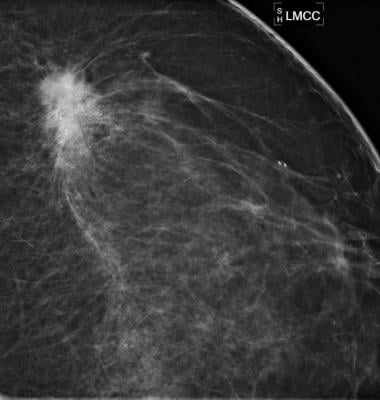
July 6, 2016 — Navidea Biopharmaceuticals Inc. announced results from three investigator-initiated studies of the Lymphoseek injection at the 2016 Annual Meeting of the Society of Nuclear Medicine and Molecular Imaging (SNMMI), June 11-15 in San Diego. Data from all three studies demonstrated beneficial performance characteristics of Lymphoseek (technetium Tc 99m tilmanocept) injection and positive comparative results versus commonly-used, non-receptor-targeted imaging agents.
In the presentation entitled, “Performance of Tc-99m tilmanocept when used alone is as or more effective in localizing sentinel nodes than sulfur colloid plus blue dye,” Jonathan Unkart and Anne Wallace, M.D., Department of Surgery at the University of California San Diego (UCSD), described a retrospective evaluation of the rate of localization of Lymphoseek when used alone compared to sulfur colloid (SC), blue dye (BD) and SC plus BD. The study included results from 148 breast cancer patients evaluated in two, prospective Phase 3 Lymphoseek clinical trials (data published in Annals of Surgical Oncology 2013). SC and BD data was derived from a literature search presented at SNMMI 2013 Annual Meeting including treatment groups of 17,814 SC alone, 12,821 BD alone and 19,627 SC+BD patients.
Results showed the following localization rates: Lymphoseek alone: 0.9865, SC alone: 0.9249, BD alone: 0.8294 and SC+BD: 0.9636. The author’s analysis suggests that Lymphoseek provided superior sentinel lymph node localization in breast cancer patients compared to the other non-targeting agents alone or in combination providing surgeons the option to use just a single agent.
The second presentation, “Use of lymphoscintigraphy with Tc-99m tilmanocept does not affect the number of nodes removed during sentinel node biopsy (SLNB) in breast cancer,” also presented by Unkart, showed data from a retrospective review evaluating whether there is a difference in the number of nodes removed using Lymphoseek during SLNB in patients who had a pre-operative imaging procedure called lymphoscintigraphy prior to SLNB versus those who only had intra-operative sentinel node (SN) identification. The results indicate that in breast cancer, identification and removal of SNs using lymphoscintigraphy (3.0 SNs) did not significantly alter the number of SLNs removed during a SLNB procedure with no imaging (2.7 SNs).
Lymphoseek’s selective-targeting performance characteristic enables the utilization of only a single dose of Lymphoseek per patient irrespective of whether both lymphoscintigraphy and SLNB are performed. The authors concluded that by using Lymphoseek, lymphoscintigraphy imaging procedures may be eliminated in this patient population and may reduce health care cost without impacting patient outcomes.
The third presentation entitled, “Rate of sentinel lymph node visualization in fatty breasts: Tc-99m Tilmanocept versus Tc-99m filtered sulfur colloid,” described results from a study at Emory University School of Medicine using Lymphoseek in patients with fatty breast tissue a population that is known to be more difficult to localize nodes when doing SLNB. The results suggest that Lymphoseek more effectively visualized sentinel lymph nodes (SLN) both on lymphoscintigraphy and during surgery compared to filtered sulfur colloids (Tc-SC) with 100 percent localization using Lymphoseek intraoperatively.
Maryam Shahrzad, M.D. presented retrospective data compiled from 29 consecutive patients with early stage breast cancer where lymphoscintigraphy was performed using Tc-SC and 28 patients where lymphoscintigraphy was performed using Lymphoseek. Multiple patient variables were recorded. The Tc-SC cohort included 96 percent of patients with fatty breasts versus 89 percent in the Lymphoseek group. Statistically significant findings included:
In lymphoscintigraphy, SLN visualization occurred in 86 percent of the Lymphoseek group compared to 59 percent of the TC-SC group. (p-value: 0.02); and
At surgery, 100 percent of patients in the Lymphoseek group showed a “hot” SLN compared to only 79 percent of patients in the Tc-SC group. (p-value: 0.01)
For more information: www.snmmi.org


 December 16, 2025
December 16, 2025 








